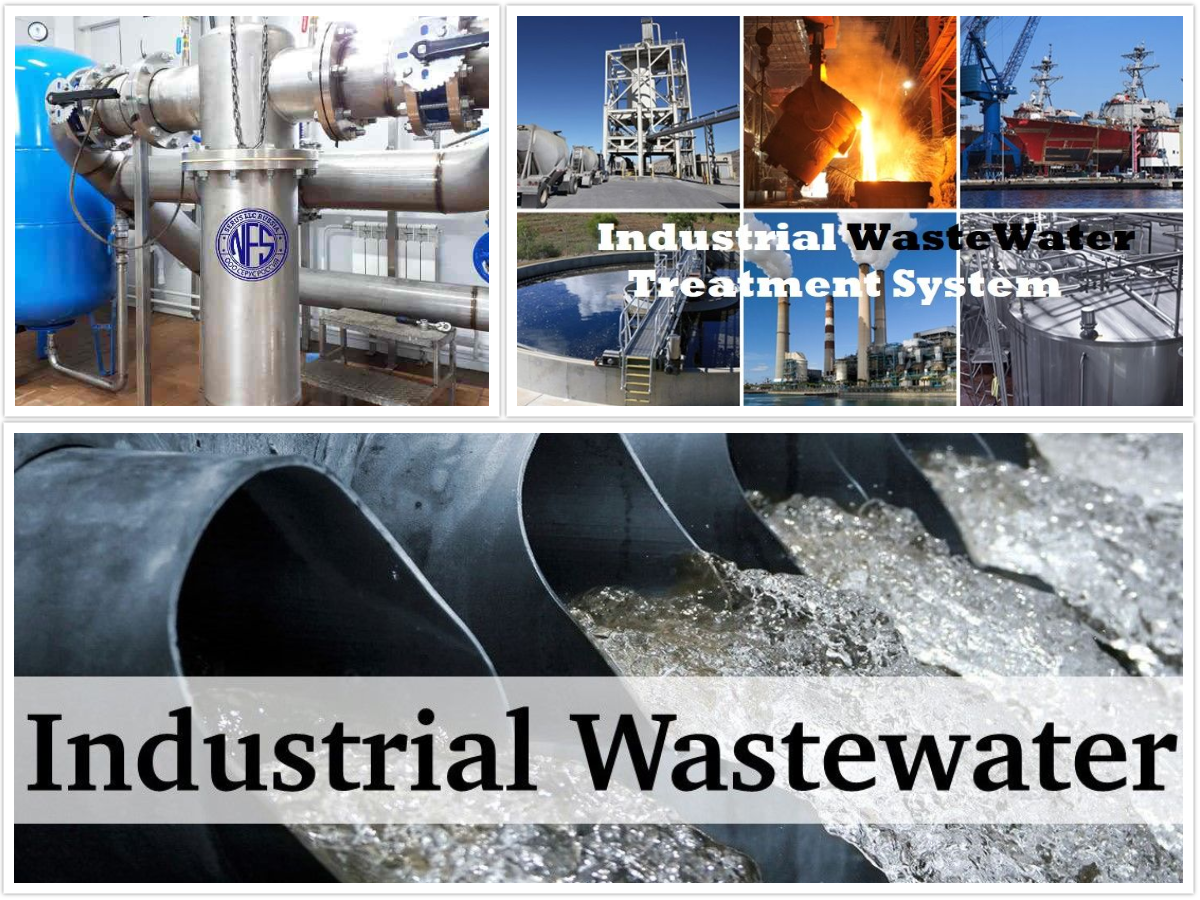Industrial Waste Water Treatment-- Industrial-Grade Water Filtration and Purification Solutions
Industrial Waste Water Treatment-- Industrial-Grade Water Filtration and Purification Solutions
Blog Article
Technologies and Developments in Industrial Waste Water Therapy Technologies
The landscape of commercial wastewater therapy is undergoing a transformative shift, driven by developments that improve both performance and sustainability. As governing standards evolve, the integration of AI and device knowing into wastewater administration systems guarantees to make sure and enhance procedures compliance.
Introduction of Drainage Treatment Technologies
Wastewater treatment innovations encompass a variety of approaches made to get rid of impurities from commercial effluents prior to their launch right into the environment. These technologies are crucial for maintaining ecological equilibrium and making certain conformity with environmental policies. The primary groups of wastewater therapy include physical, chemical, and biological approaches, each offering distinct objectives based upon the nature of the pollutants present.

Organic treatment techniques use microorganisms to deteriorate raw material, making them particularly effective for organic-rich effluents. Strategies like turned on sludge and biofilm reactors harness the natural deterioration abilities of microorganisms, leading to significant reductions in biochemical oxygen demand (BODY)
Advanced Purification Strategies
Advanced filtration techniques represent an important advancement in the world of commercial wastewater therapy, enhancing the efficiency of contaminant removal processes. Industrial Waste Water Treatment. These methods encompass a range of innovations, including microfiltration, ultrafiltration, nanofiltration, and reverse osmosis, which offer sequential barriers for various particle sizes and chemical frameworks
Microfiltration and ultrafiltration make use of membrane layer systems to get rid of put on hold solids, microorganisms, and bigger organic molecules, improving the quality of effluent before more therapy. Nanofiltration links the space between ultrafiltration and reverse osmosis, effectively removing divalent ions and organic substances, thus reducing the load on downstream procedures.
Reverse osmosis uses the greatest level of purification by permitting just water and little molecules to go through its semi-permeable membrane layers, making it suitable for recovering premium water from industrial effluents. Current improvements in membrane technology, consisting of the advancement of more fouling-resistant and long lasting materials, have substantially improved operational effectiveness and decreased expenses.
Incorporating these innovative filtering techniques not just improves the total treatment process however also adds to sustainability efforts by making it possible for water reuse and source recovery in commercial settings. (Industrial Waste Water Treatment)
Organic Therapy Advancements

Furthermore, the growth of engineered biological systems, such as membrane layer bioreactors (MBRs), integrates biological therapy with sophisticated membrane purification. This combination permits greater effluent high quality and reduced impact, making it suitable for space-constrained commercial facilities. Innovations in genetically crafted microorganisms have actually likewise arised, improving the biodegradation of specific impurities, such as pharmaceuticals and hefty metals, that are commonly challenging to get rid of.
Furthermore, the implementation of bioaugmentation methods, where advantageous germs are introduced to boost the existing biological therapy processes, has revealed promising outcomes in improving treatment efficiency. These developments jointly signify a pattern in the direction of more lasting and reliable organic treatment methods that can adjust to the developing intricacies of industrial wastewater streams. As markets proceed to focus on environmental compliance, these organic technologies will play an important duty in wastewater management.

Source Healing Methods
In commercial settings, the integration of source recovery approaches has become significantly important for enhancing sustainability and lessening waste. These techniques concentrate on drawing out valuable products and energy from wastewater streams, therefore transforming possible contaminants right into recyclable sources.
One popular strategy is nutrition recuperation, where nitrogen and phosphorus, commonly present in excess in wastewater, are recorded and converted right into fertilizers. This not just reduces environmental influences however additionally provides a round economic situation service for agricultural applications. Furthermore, innovations such as anaerobic digestion permit the conversion of natural waste into biogas, a renewable resource source that can counter nonrenewable fuel source use in commercial procedures.
Additionally, progressed purification and membrane innovations promote the recovery of industrial byproducts such as salts and metals. These recovered materials can be rehabilitated right into production processes, decreasing the demand for virgin Resources sources.
Future Trends in Waste Water Administration
As markets significantly prioritize sustainability, the future of wastewater management is readied to go through considerable makeovers. Technical advancements, such as expert system and artificial intelligence, will certainly make it possible for more efficient monitoring and administration of wastewater systems. These innovations can anticipate maintenance requirements, enhance treatment processes, and enhance decision-making, ultimately decreasing operational costs and environmental influence.
Moreover, the assimilation of round economic situation concepts will certainly play a vital function in wastewater administration. Industries are expected to shift towards systems that not just deal with wastewater however likewise recuperate important resources, such as nutrients, water, and power. This shift will reduce waste and promote the reuse of products, straightening with international sustainability goals.
Emerging therapy strategies, such as membrane bioreactors and advanced oxidation procedures, will certainly even more enhance the effectiveness of wastewater therapy, permitting better effluents ideal for reuse. Additionally, governing structures are likely to progress, emphasizing more stringent requirements for wastewater discharge and encouraging markets to adopt cutting-edge therapy services.
Conclusion
In verdict, the evolution of industrial wastewater treatment this contact form modern technologies demonstrates a significant change in the direction of enhanced efficiency and sustainability (Industrial Waste Water Treatment). Advancements in innovative filtration techniques, biological treatments, and resource recovery methods highlight the market's dedication to environmental stewardship.
The landscape of commercial wastewater treatment is undergoing a transformative change, driven by advancements that improve both performance and sustainability.Wastewater therapy innovations incorporate an array of approaches designed to remove contaminants from industrial effluents before their release into the environment.Utilizing the power of biological procedures has led to significant developments in the treatment of industrial wastewater.Additionally, the implementation of bioaugmentation techniques, where useful microorganisms are introduced to enhance the existing biological therapy procedures, has actually shown encouraging outcomes in improving therapy efficiency. These advancements jointly represent a pattern towards even more lasting and effective organic therapy methodologies that can adapt to the developing complexities of commercial wastewater streams.
Report this page